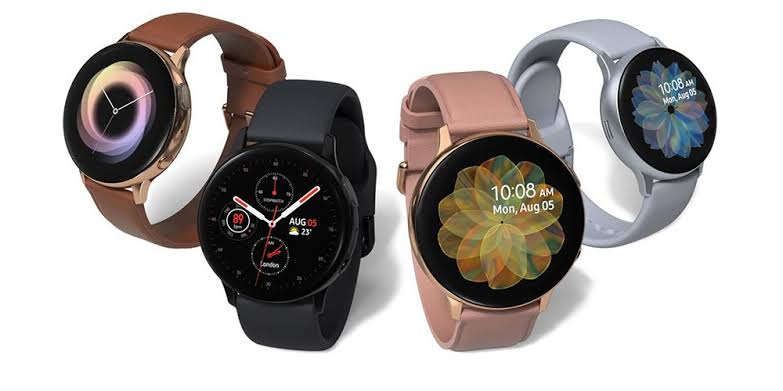Smartwatch technology has evolved remarkably over the past decade, transforming from a simple timekeeping accessory into a powerful wearable device that integrates health tracking, communication, and productivity tools. By 2025, smartwatches have become essential companions for both personal and professional life, offering advanced features that rival even smartphones in certain functionalities.
This evolution has been driven by innovations in hardware, software, and artificial intelligence, making smartwatches more intelligent, efficient, and user-friendly. As consumer demand for convenience, health monitoring, and connectivity grows, smartwatch manufacturers continue to push boundaries, introducing features that enhance daily living and support modern lifestyles.
The Early Stages of Smartwatches
The earliest smartwatches were primarily focused on basic functions such as displaying notifications, controlling music, and syncing with smartphones. They were often seen as extensions of mobile devices rather than standalone gadgets.
Brands like Pebble and early versions of the Apple Watch laid the foundation for wearable technology by emphasizing simplicity and integration. However, their limited battery life and basic features initially prevented them from reaching mainstream adoption.
Advancements in Health and Fitness Tracking
One of the most significant drivers of smartwatch evolution has been the growing emphasis on health and wellness. Modern smartwatches are equipped with sensors that monitor heart rate, track steps, measure blood oxygen levels, and even analyze sleep patterns.
By 2025, some smartwatches have integrated advanced features like electrocardiogram (ECG) monitoring, blood pressure measurement, and early detection of health issues such as irregular heart rhythms. These devices have become valuable tools for both fitness enthusiasts and individuals managing chronic health conditions.
Integration with Artificial Intelligence
Artificial intelligence (AI) has transformed the capabilities of smartwatches. AI-powered algorithms now analyze health data in real-time, providing personalized insights and recommendations.
Smart assistants integrated into smartwatches, such as Siri, Alexa, or Google Assistant, allow users to perform tasks hands-free, from sending messages to setting reminders. The combination of AI and wearable technology enables seamless user experiences and predictive functionalities that anticipate user needs.
Connectivity and Standalone Features
Smartwatches have evolved beyond being mere smartphone companions. With built-in cellular connectivity, many modern smartwatches allow users to make calls, send messages, and stream music independently of their phones.
Features such as GPS navigation, contactless payments, and integration with smart home devices have made smartwatches versatile tools for managing both work and daily life. This independence from smartphones has greatly expanded their appeal and usability.
Enhanced Display and Design
Design has played a major role in the evolution of smartwatches. Early models often had bulky designs, but today’s smartwatches are sleeker, customizable, and stylish enough to function as fashion accessories.
Advancements in display technology, such as AMOLED and always-on screens, provide vibrant visuals and better battery efficiency. Interchangeable straps and customizable watch faces allow users to tailor their devices to match their personal style.
Battery Life and Power Efficiency
Battery life was once a major limitation for smartwatches, but recent improvements in battery technology and power management have addressed this issue. Many 2025 models feature longer-lasting batteries, with some offering multi-day use on a single charge.
Solar charging, energy-efficient processors, and fast-charging capabilities have also become standard features in high-end smartwatches, ensuring greater convenience for users.
Expanding Ecosystems and App Integration
Smartwatch ecosystems have expanded to include a wide range of applications tailored for health, productivity, entertainment, and travel. Users can now access fitness programs, calendar tools, payment apps, and streaming services directly from their wrists.
App developers continue to innovate by creating smartwatch-specific experiences, making these devices indispensable for managing daily tasks and personal goals.
The Future of Smartwatch Technology
Looking ahead, the future of smartwatch technology is likely to focus on greater integration with medical-grade health monitoring, more sustainable materials, and even enhanced biometric authentication.
Emerging trends such as AI-driven mental health tracking, flexible displays, and augmented reality (AR) overlays are expected to redefine the smartwatch experience. As wearable devices become more connected to the Internet of Things (IoT), smartwatches will play a bigger role in managing smart homes, vehicles, and workspaces.
Conclusion
The evolution of smartwatch technology and features highlights how far wearable devices have come since their inception. What began as simple notification tools has transformed into a hub for health monitoring, communication, and personal management.
By 2025, smartwatches have become an integral part of daily life, combining cutting-edge technology with sleek designs to meet the needs of modern users. As innovation continues, these devices will only become smarter, more efficient, and more essential to the way we live and work.




Cool